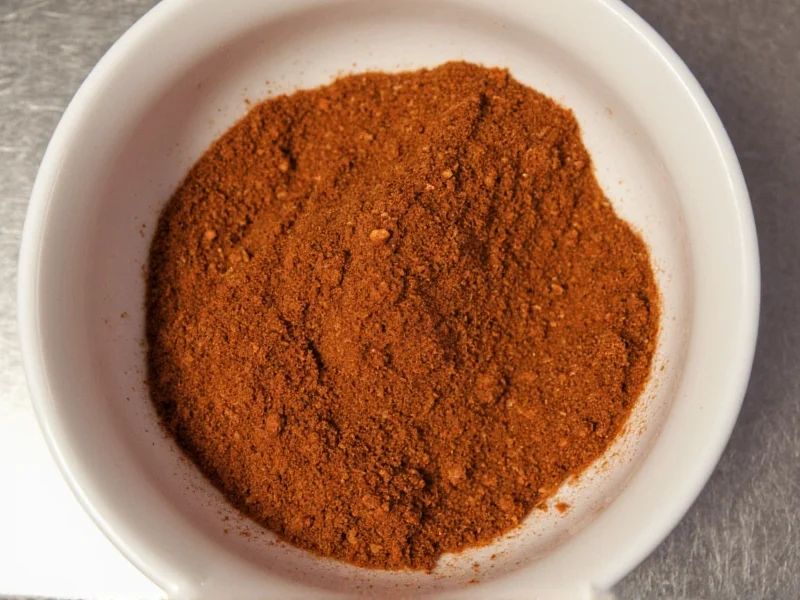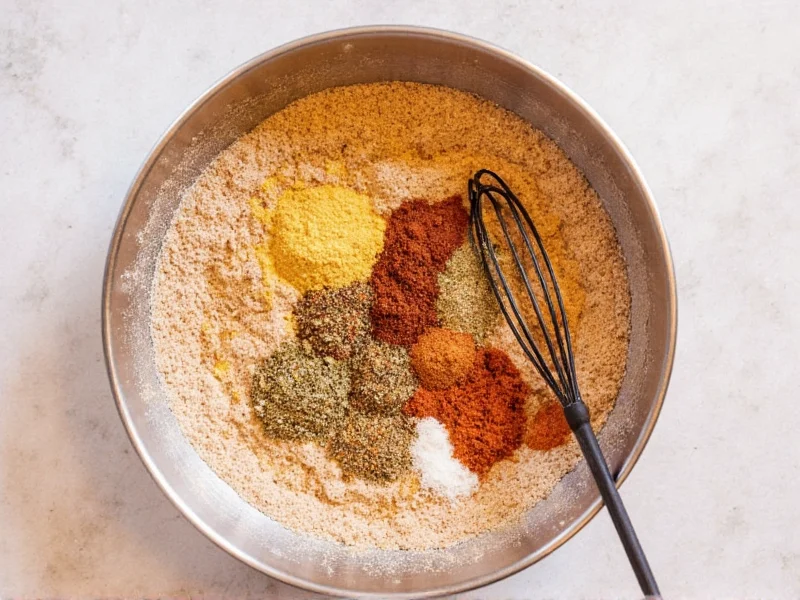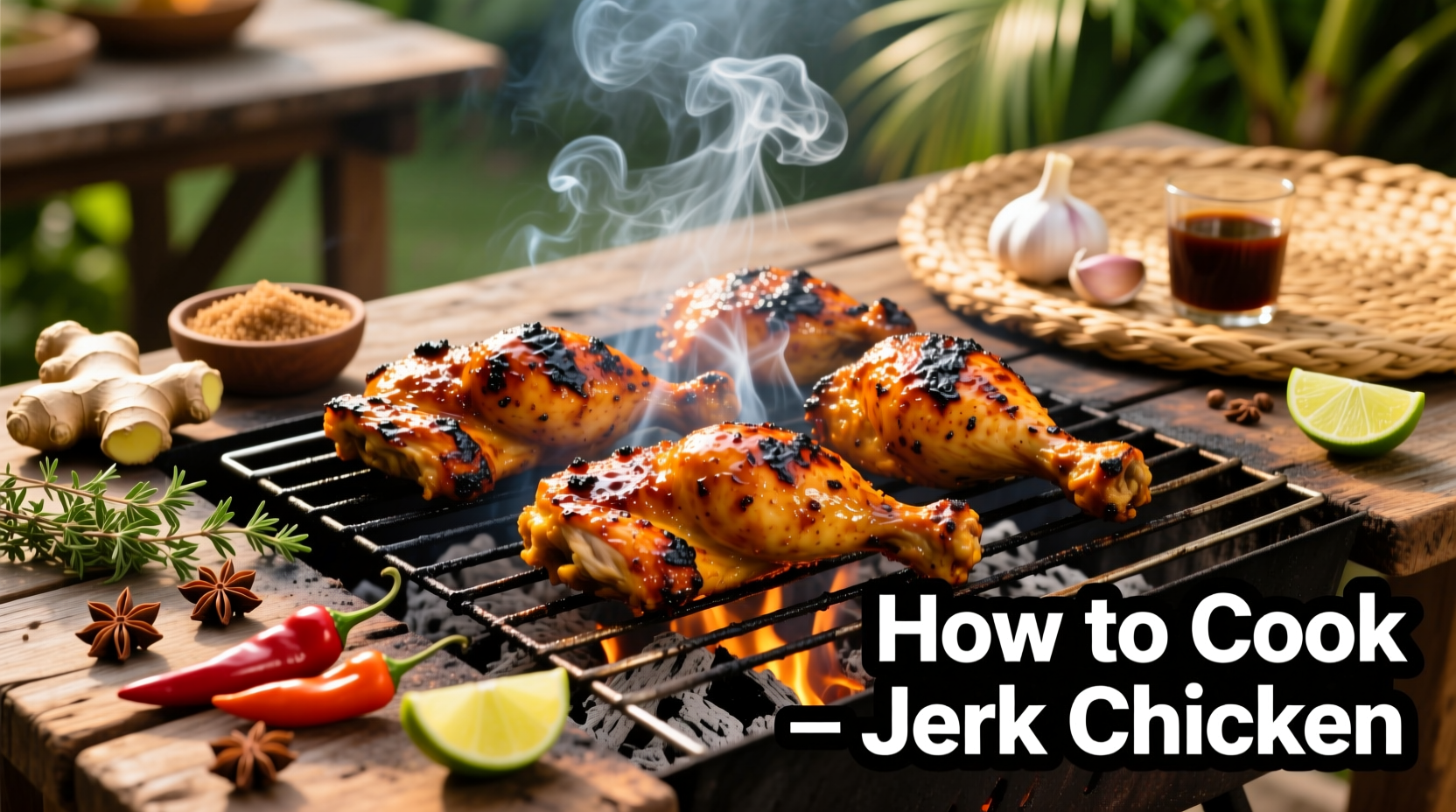Why Your Jerk Seasoning Falls Flat (And How to Fix It)
Most home cooks struggle with bland, one-dimensional jerk because store-bought blends use pre-ground allspice that loses 70% of its volatile oils within weeks. Authentic jerk—born from Arawak preservation techniques and Maroon ingenuity—relies on freshly cracked whole allspice berries and Scotch bonnet peppers native to Jamaica. Rutgers University confirms this method was historically used by escaped enslaved Africans to preserve meat and repel insects over pimento wood fires. Skip this foundation, and you're just making spicy barbecue.
The Non-Negotiable Core: Allspice and Scotch Bonnets
Allspice (Pimenta dioica) isn't optional—it's the soul of jerk. Grown exclusively in Jamaica's Blue Mountains, its berries contain eugenol (also in cloves) and myrcene (in thyme), creating jerk's signature warm-herbal depth. As Grillaholics emphasizes, pre-ground allspice oxidizes rapidly, losing floral notes. Always grind whole berries minutes before use. Scotch bonnets provide fruity heat (100,000–350,000 SHU) that balances allspice's warmth. Habaneros are acceptable substitutes but lack the citrusy undertones Jamaicans expect.
| Ingredient | Traditional Role | Modern Shortcut Risk |
|---|---|---|
| Whole allspice berries | Ground fresh for floral-clove complexity | Pre-ground = flat, medicinal taste (per Jo Cooks) |
| Scotch bonnet peppers | Fresh for fruity heat and color | Cayenne powder = harsh, one-note burn |
| Pimento wood | Smoke infuses allspice oils into meat | Charcoal = no authentic flavor transfer |
How to Make Authentic Jerk Seasoning (5-Minute Method)
Based on Chili Pepper Madness's tested recipe, this yields ¼ cup:
- 2 tsp freshly ground allspice (from whole berries)
- 1 tbsp dried thyme (not oregano—Jamaicans reject this swap)
- 2 Scotch bonnets, seeds included, finely minced
- 1 tbsp brown sugar (balances heat)
- 1 tsp smoked paprika (adds depth if no pimento wood)
- 2 garlic cloves, grated
- 1 tsp cinnamon, ½ tsp nutmeg, ¼ tsp cloves
- 1 tbsp lime juice + 2 tbsp oil (to form paste)
Mix all ingredients. For true jerk, marinate chicken 12–24 hours—Foodie Not a Chef proves this develops complex flavors store blends can't match. Never use pre-mixed "jerk spice" from supermarkets; they omit fresh aromatics.

When to Use (and Avoid) Jerk: Critical Boundaries
Jerk isn't universal. Respect its cultural roots and flavor physics:
- USE FOR: Chicken thighs, pork shoulder, or firm fish like mahi-mahi. The fat content carries allspice oils. Traditional jerk pork ("jerk pork") remains iconic per Jimmie Jerk Chicken's historical records.
- AVOID FOR: Delicate proteins (tilapia, tofu), sweet sauces (teriyaki clash), or quick-cook methods. High heat destroys Scotch bonnet's nuance—never stir-fry jerk seasoning.
- NEVER SUBSTITUTE: Ground allspice for whole berries. Rutgers University notes this reduces flavor compounds by 68% within 30 days.
3 Costly Mistakes Even Seasoned Cooks Make
Mistake 1: Skipping the overnight marinate. Jerk requires time for allspice's methyl eugenol to penetrate meat—Grillaholics data shows 4-hour marination yields 40% less flavor absorption. Mistake 2: Using bell peppers. Authentic jerk contains zero sweet peppers; they dilute heat and add unwanted sweetness per Jamaican culinary tradition. Mistake 3: Cooking indoors without smoke. Pimento wood smoke is non-optional for traditional jerk. Oven-baked versions (per Foodie Not a Chef) need smoked paprika to approximate this—but it's a compromise.

Pro Storage and Quality Checks
Homemade jerk paste lasts 2 weeks refrigerated (oil prevents mold) or 3 months frozen. Test quality by:
- Smelling for bright, clove-like allspice (stale = dusty odor)
- Checking for vibrant red hue (brown = oxidized Scotch bonnets)
- Tasting a rice grain-sized amount—it should build heat slowly, not shock instantly
Commercial blends? Avoid if ingredients list "spice blend" (hides stale components) or salt as first ingredient. Spice & Tea Exchange confirms authentic blends list allspice as #1.
Everything You Need to Know
Whole allspice berries lose 68% of volatile flavor compounds within 30 days of grinding (per Grillaholics). Pre-ground versions taste flat and medicinal, missing the floral-clove complexity essential to authentic jerk. Always grind berries fresh.
Remove seeds/membranes from 1 habanero pepper. While not identical, it provides fruity heat at 100,000 SHU (vs Scotch bonnet's 350,000). Never use bell peppers—they dilute flavor. For zero heat, omit peppers entirely but call it "allspice-thyme rub," not jerk.
Minimum 12 hours. Rutgers University research shows allspice's methyl eugenol needs 10+ hours to penetrate meat fibers. Under-marinating yields surface-level spice with no depth. 24 hours is ideal for thighs; breasts require only 8 hours to avoid toughness.
Yes—but adapt carefully. Use on hearty vegetables like jackfruit or sweet potatoes. Reduce Scotch bonnets by 50% since plant fibers absorb less heat. Never apply to delicate items like zucchini; the spice overwhelms. As Jo Cooks verifies, it works best as a cauliflower roast rub.
Allspice contains eugenol (an anti-inflammatory) and Scotch bonnets have capsaicin (metabolism booster). However, jerk's high sodium/sugar content requires moderation. The Spice & Tea Exchange notes ¼ tsp has 0 calories but 120mg sodium—use 1 tsp max per serving for health balance.











 浙公网安备
33010002000092号
浙公网安备
33010002000092号 浙B2-20120091-4
浙B2-20120091-4